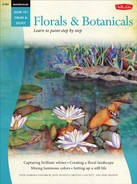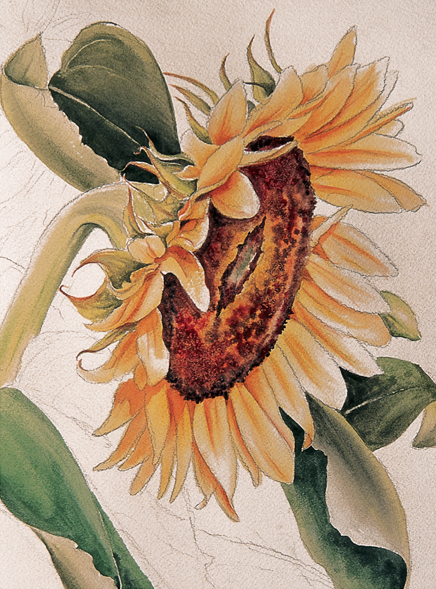with Caroline Linscott
A COMPELLING PAINTING doesn’t have to include many elements. Sometimes highlighting a single subject, like the close-up of a sunflower here, can create a dynamic composition and convey a mood. The various shapes, textures, and values of the flower’s petals, seeds, and leaves provide plenty of visual interest!
Creating Harmony with Color
The colors used in this painting are analogous (see page 18). But the similarity of the colors doesn’t produce a flat, uninteresting scene. Instead it creates a sense of unity and harmony that is difficult to achieve with high-contrast subjects. This painting illustrates how to vary the values within a group of cool colors to evoke a sense of stillness and quietude.
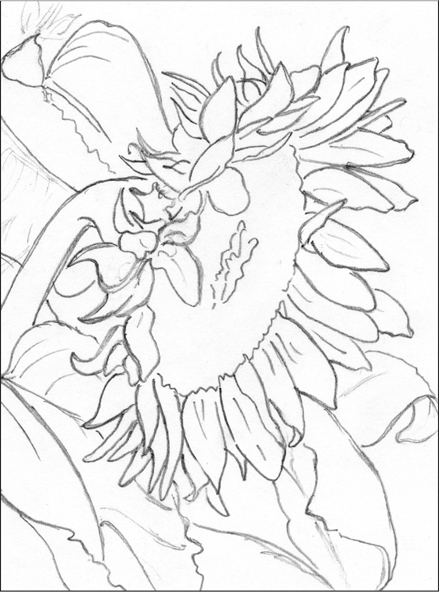
1 I begin by planning out my painting with a simple, rough pencil sketch of the flower and leaves. I place the sunflower in the upper right portion of the page so that the focal point is slightly off-center. Notice how the diagonal lines of the stem and leaves lead the viewer’s eye through the composition and towards the center of interest (see page 10). I remember to use a light touch when drawing on watercolor paper; I want pencil lines that will erase easily when I’ve finished painting, without leaving behind any grooves. Once I’m satisfied with my sketch, I begin laying in the color.
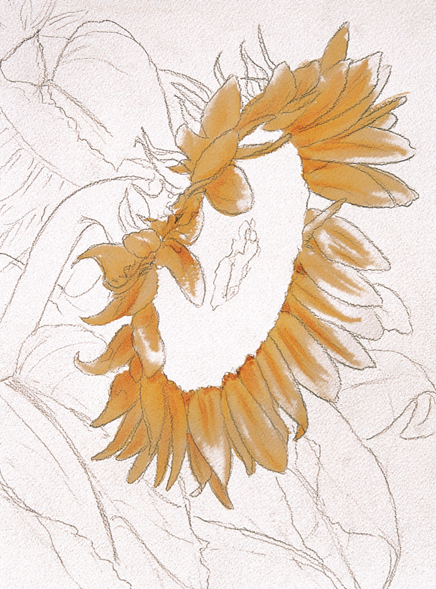
2 I wet the petals, working clear water deep into the paper. Then I use a round brush to apply watered-down lemon yellow to each petal, working from the inside edge out. I leave some areas white for highlights. While the petals are still wet, I use a lemon yellow and yellow ochre mix to shape the base and center of each petal. I let the paper dry completely; then I mix yellow ochre and burnt sienna for the spaces between the petals, using less water and more pigment under some of the petals to create depth. I rinse my brush, blot it on a paper towel, and then blend the areas I’ve just painted until I achieve smooth transitions of color.
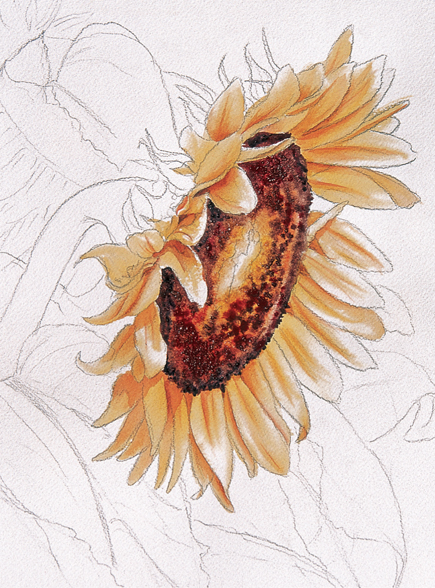
3 When dry, I use a mix of yellow ochre, burnt sienna, and permanent magenta to add shadows. Then I wet the area around the outer edge of the flower’s center, but leave the middle dry. I apply both yellow ochre and a mix of lemon yellow and yellow ochre around the dry center, using less water to create rich, dark colors. I gradually add a mix of magenta and lemon yellow and a mix of burnt sienna, magenta, and ultramarine blue to darken the colors near the base of the petals. I use even less water where the petals meet the center. I sprinkle salt on the center while it’s still damp, then gently brush it away when the paint dries for a mottled seed texture.
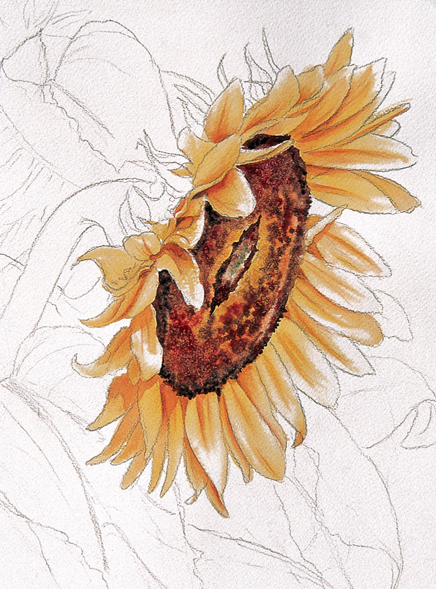
4 Now I finish the center. I start along the center’s edge with yellow ochre and a mix of lemon yellow and yellow ochre, as in step three. Then I add a green mix of ultramarine blue and lemon yellow at the very center. I mix burnt sienna, magenta, and ultramarine blue to paint a dark rim where the center meets the petals, separating the two sections visually. While the paint is still damp, I sprinkle salt over the middle. When dry, I carefully brush away the salt to reveal the textured area.
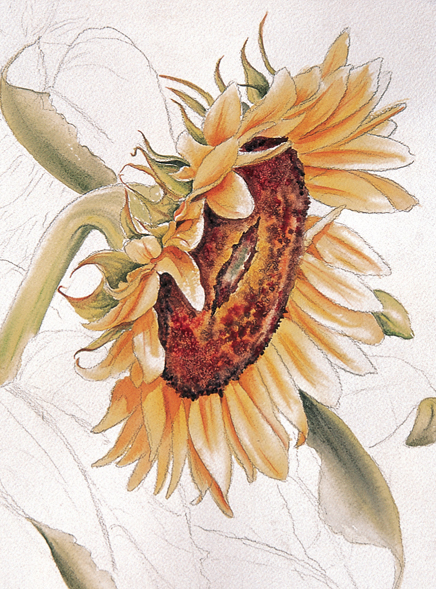
5 Now I wet the undersides of the large, curling leaves, and then I stroke a graded wash of lemon yellow mixed with cerulean blue along the outside edges, working from the darker outside edge of the leaf toward the lighter center. While the leaf is still wet, I darken the center with a mixture of lemon yellow and ultramarine blue. Next I wet the smaller leaves and paint them in the same manner, working from light to dark. I also wet the stem and start painting it with the lemon yellow and cerulean blue mix, and then I add a dark green mixture of yellow ochre, burnt sienna, and ultramarine blue to the underside.
6 once the undersides of the curled leaves are dry, I wet the top of each leaf. Then I work in varying values of green, from the lightest (lemon yellow and cerulean blue) to the darkest (yellow ochre, burnt sienna, and ultramarine blue). While the paint is still damp, I drag the tip of the handle of my brush through the leaf to scrape out color and create veins. If the paint is very wet, this technique will produce dark lines; if the paint is only damp, it will create soft white lines.

7 For the background, I work ultramarine into the area at the bottom of the paper behind the leaves. As I work up toward the top of the painting, I gradually lighten the values by using more water and less paint. In the background area at the left, I wash in a light mixture of lemon yellow and yellow ochre. While this area is still wet, I add some soft leaves in the background with a green mix of lemon yellow and ultramarine.
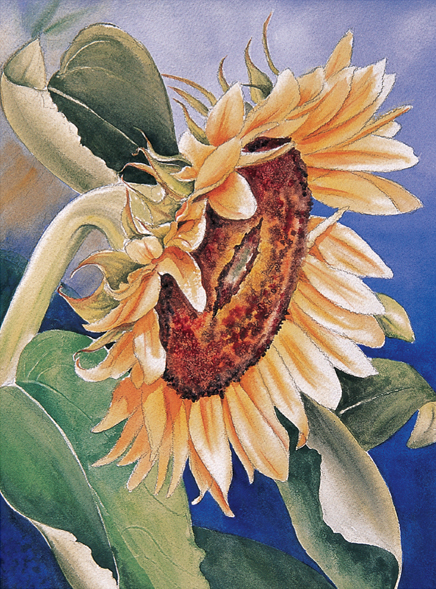
8 When dry, I paint over the background with a second wash of a dark mix of yellow ochre, burnt sienna, and ultramarine, thinned with more water toward the bottom. Then I add a mostly transparent blue wash over the small background leaves. I let the painting dry between washes.
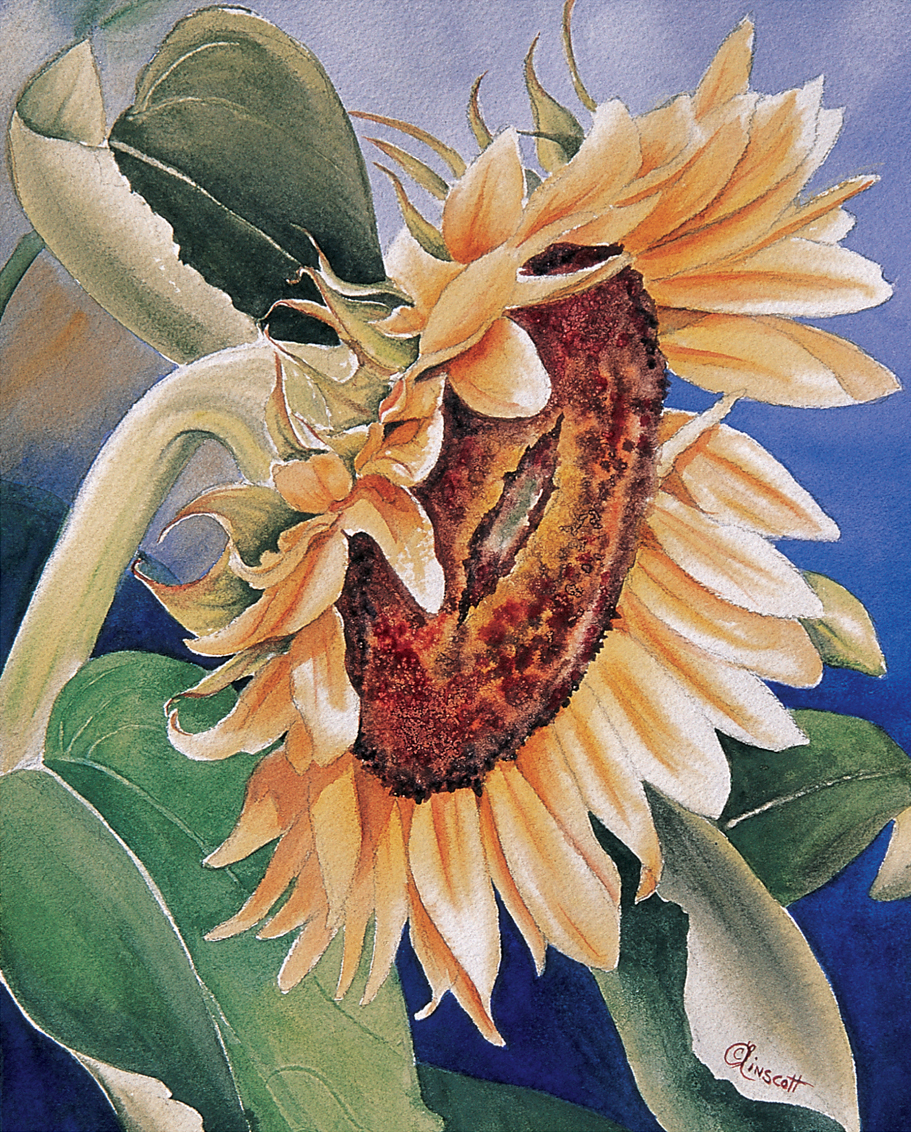
9 Now I apply a series of glazes over the background. I alternate between a green mix of lemon yellow and ultramarine and a deep value of ultramarine, letting the color dry between each application. Toward the bottom of the sunflower, I use very dark colors, lightening the color with water as I work upward. I let my painting dry, erase any stray pencil lines, and sign my beautiful work!
